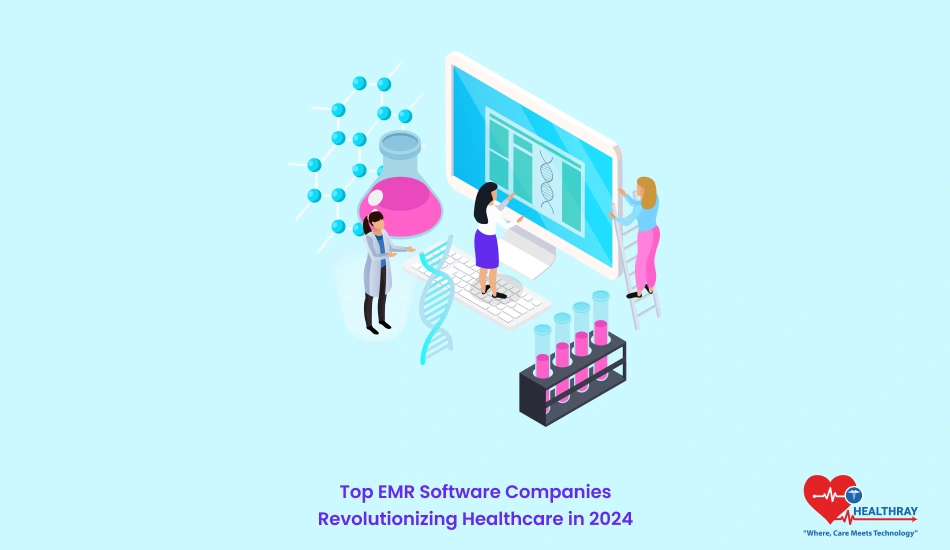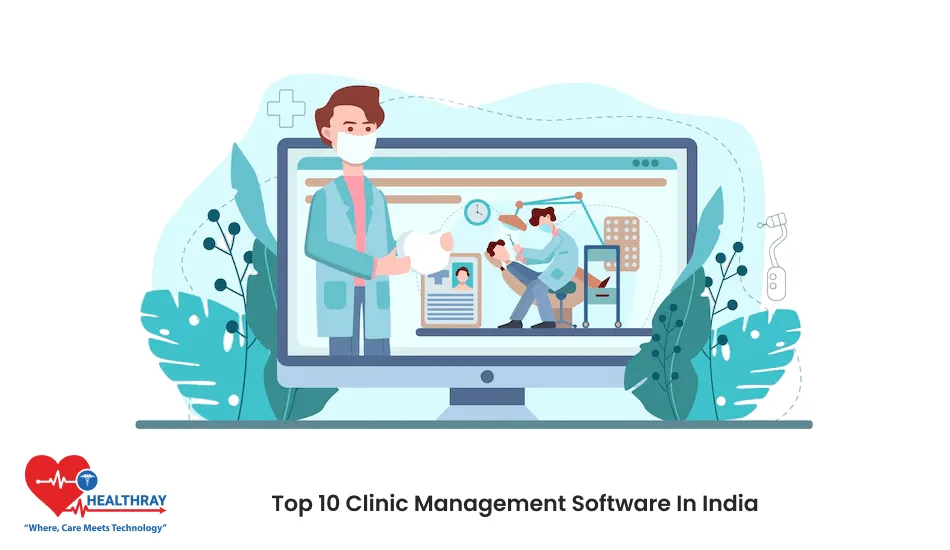Introduction
Electronic Medical Record (EMR) software has become the bedrock of modern health care. In hospitals, clinics and private practices the system not only stores patient records, but also through development and improvement it promotes and enhances general efficiency as well as compliance with all regulation standards. In 2024, it is not just the bar raised, but the climb becomes too much for someone to handle.
Why does this now matter? As artificial intelligence continues to develop with newer telemedicine integration technologies while security regulations become more demanding for data, healthcare professionals need to maintain an awareness of the cutting edge. Staying informed as to which of the Electronic Medical Records companies is ahead of the competition in making inroads into these areas can be the key to efficient workflow or better patient care.
Labelling it as the top handle of the strongest EMR software providers in the current year. Those are either mighty industry leaders or newer more innovative, creative companies by looking how they define and map out tomorrows in the healthcare industry and then reasons why to take notice.
The Current State of EMR Software in 2024

The market for EMR software in 2024 represents continuous fast-paced health-tech development. From merely digitizing patient records, EMR systems have evolved to become multifunctional tools supporting everything from patient engagement to data analytics and predictive health outcomes in the last decade.
What’s new this year? AI integration is now at the forefront, which would allow for smarter data analysis and more intuitive user interfaces. Entity recognition and machine learning (EMR) systems now also provide capabilities that may flag patients’ risks, advise drugs and therapies, and automate data capture. Directly it decreases the administrative burden for medical personnel and makes room for direct patient care. Telehealth is also a routine feature of most EMRs. These telemedicine platforms are built in and facilitate the flow of communication between the patient and the service provider, and is of big relevance today following the pandemic.
Enhanced data security is one of the leading trends. The number of cyber threats has increased exponentially and EMR systems of year 2024 are further improved with end-to-end encryption and multi-factor authentication. Such actions also conform to enhanced health information privacy regulations and safeguards personal patient information.
Why is this important to healthcare professionals? These are not just technical feats. They impact the very core of care delivery. The smooth processes and good patient results are achieved by these direct impacts on the nature of delivery. The only thing between a staffed and functioning coordinated healthcare system is the right EMR software.
Criteria for Evaluating EMR Software
It’s not surprising that the task of choosing the right EMR is daunting with so many EMR options and the complexity of healthcare needs. By 2024 selection criteria for an EMR system that meets all criterion requirements are significantly more rigorous and include more sophisticated functionalities and integration capabilities. What are healthcare providers considering when assessing EMR software?
1. Core Features: The core features do not change. EMRs should all produce records storage, scheduling, billing, and reporting functionality for basic tasks. However, the best EMR systems in 2024 offer much more with intuitive navigation, low learning curves, and excellent data retrieval capabilities.
2. Interoperability: Information should be freely exchanged between the different health care systems. Sophisticated EMRs will have been developed to interoperatively operate with an entire host of tools including lab information systems, radiology equipment and other types of health information exchanges. If done correctly it enables an uninterrupted flow of information between practices, and thus enables the correct treatment decisions to be made.
3. Customization and Flexibility: Every practice is unique. An EMR system that has the ability to be customized in order to fit the workflow of a specific department or specialty is an enormous asset. It might be done through customized template, customized dashboard, and customizable data field that could simplify the daily task.
4. Advanced Analytics: The good EMR software doesn’t only store data; it helps analyze it. Meaning, in this case, built-in tools that can be leveraged to highlight patient patterns, monitor performance data, and aid in clinical decision making. Providers can take advantage of actionable information that can lead to treatment plan refinement and enhanced resource utilization.
5. Patient Engagement Tools: Modern EMR systems are not doctor-centric only. These are patient portals that on the individual level enable him/her to access health records, book appointments and communicate with the provider. Indeed, such tools are also demonstrated to enhance patient involvement and satisfaction.
6. Security Measures: Cyber attacks on many of the EMR systems are emerging to be rampant. So, there comes the issue of keeping confidential data related to patients along with protecting them from those cyber issues. However, they rely most importantly on end-to-end encryption, role-based access control and audit trails.
7. Support and Training: All changes or shifts on EMR would likely be painful if not executed correctly with poor customer support. Advanced customer service care at a premium with quality and comprehensive training programs differentiates it from another situation of horror, from the easy movement of belongings for the workers.
These are the criteria that health care providers should be looking for in an EMR when choosing in 2024. The higher the performance of these systems in such aspects, the greater the value they will be in workflow optimization and the final impact will be on patient outcomes.
Conclusion
The health industry has never ever been so significant in the application of EMR software. As of 2024, this sector is only seeing sharp growth with the involvement of AI, high security mechanisms, and the patient-centric model. The healthcare providers have never had better choice options-from old market leaders to new disruptors-for finding solution products that perfectly match their respective needs, for example, seamless integration with a robust Hospital Management System.
The best EMR system differs in terms of its level of being functional, secure, customized, and supported in software. Taking a peek at the present trend and grasping the landscape it portrays while simultaneously judging key criteria helps health organizations make the correct decision to improve things more effectively for patients, which eventually may lead them towards operational efficiency.
Future developments in EMR systems will promise more dynamic systems that will foretell the needs of patients and support prevention rather than reaction. The system, at the same time, will keep data security at its peak. Remaining updated and dynamic in this field of rapid advancement of technology will be paramount to a healthcare provider as it helps him stay in the game of quality care.





